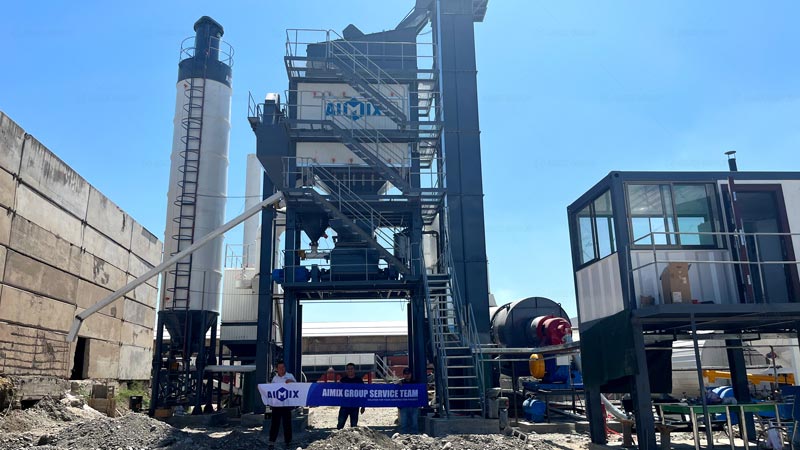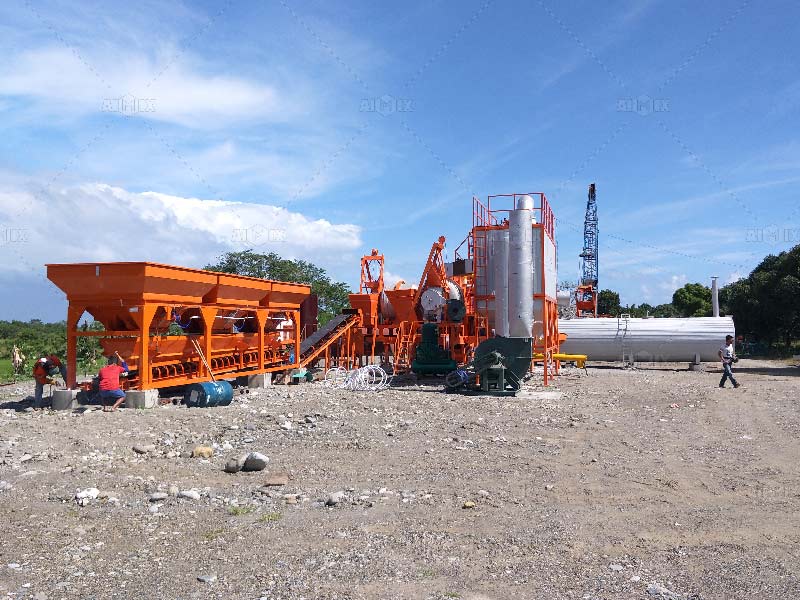Transporting heavy construction equipment across vast and diverse regions in Latin America poses significant challenges. Whether you’re moving a full-scale asphalt plant or a compact mini asphalt plant, ensuring its safe arrival is critical to avoid costly delays, equipment damage, or even project failure. This article explores practical strategies to reduce the risk of damage during long-distance transportation, particularly relevant for contractors and suppliers operating in markets such as Peru, Chile, Brazil, and beyond.
Understanding the Transport Environment in Latin America
Vast Distances and Varied Terrain
Latin America’s geography ranges from mountainous Andean roads to humid tropical coasts and arid plains. Transporting an asphalt plant(planta de asfalto) in Peru, for example, may involve navigating steep inclines, unpaved routes, and unpredictable weather—all of which can pose risks to sensitive components like burners, motors, and control systems.
Infrastructure Limitations
In some areas, narrow roads, low bridge clearances, and weight restrictions may force transporters to take longer or more complicated routes. These conditions increase the chances of mechanical shock, vibration, or environmental exposure during transit. Identifying such challenges in advance is essential to minimizing risk.

Choosing the Right Packaging and Transport Method
Modular Design and Pre-Shipment Disassembly
Many modern asphalt plants are designed with modular components that can be disassembled for shipping. Separating fragile systems—such as the control cabin, mixing unit, and dust collection systems—can prevent stress and cracking during transport. When evaluating an asphalt plant for sale, check if the model supports easy breakdown and secure packaging.
Containerization for Mini Asphalt Plants
For smaller equipment like a mini asphalt plant(mini planta de asfalto), containerization is a highly effective solution. Placing key units in ISO-standard containers protects them from moisture, impact, and theft. It also simplifies customs clearance and intermodal transport, particularly important in countries with less-developed logistics networks.
Preventive Measures During Loading and Transit
Use of Shock-Absorbing Supports
Heavy asphalt plant components should be mounted on vibration-damping bases or cradles. These supports absorb road shocks and prevent metal fatigue or weld cracking. For particularly delicate components, additional foam or rubber padding can provide an extra layer of protection.
Weatherproofing and Corrosion Protection
Given the humidity in regions like coastal Peru or the Amazon basin, applying anti-corrosion coatings and moisture barriers to exposed steel components is critical. Control panels and electrical systems should be sealed or wrapped in industrial-grade plastic to prevent damage from rain or condensation.
Proper Load Distribution and Tie-Downs
Improper weight distribution or weak tie-downs can cause components to shift or tip over during transport. Using chains, straps, and edge protectors rated for the plant’s weight ensures that each module stays firmly in place throughout the journey.

Logistics Planning and Documentation
Route Planning with Risk Assessment
Before shipment, logistics teams should perform a detailed risk assessment of the route—identifying road conditions, weather forecasts, rest stops, and emergency services along the way. This is especially important when delivering an asphalt plant in Peru(planta de asfalto en Perú) or other mountainous countries where altitude and terrain can drastically impact transport conditions.
Clear Labeling and Inventory Control
All disassembled parts should be labeled clearly and listed in a transport inventory. Labels must include handling instructions and orientation indicators. This reduces the chance of loss or incorrect reassembly at the project site.
Working with Experienced Partners
Choose Transporters with Industry Experience
Hiring logistics companies that specialize in construction machinery transport can make a significant difference. They understand how to handle bulky, sensitive equipment, and they often carry specialized insurance for industrial machinery.
Local Partners Add Value
Collaborating with local contractors or logistics providers ensures smoother customs clearance and navigation of region-specific challenges. For example, a local team delivering an asphalt plant in Peru will know how to handle inland transport regulations and potential delays better than an international carrier.
Final Inspection and On-Site Assembly
Post-Delivery Quality Checks
Once the plant reaches the site, a detailed inspection should be conducted. Check all electrical connections, moving parts, and fluid lines for damage. Any misalignments should be addressed before powering on the system.
Use Manufacturer Support for Reassembly
Some suppliers offer technical teams or remote guidance to support reassembly. This is especially useful when dealing with high-value equipment or tight project timelines. When reviewing an asphalt plant for sale(planta de asfalto en venta), consider whether the supplier includes after-sales support for installation and testing.
Conclusion: Prevention Is More Cost-Effective Than Repair
Transporting an asphalt plant or mini asphalt plant across long distances in Latin America requires more than just basic logistics. It demands careful planning, robust packaging, weather protection, and reliable partners. By focusing on preventive measures and smart handling strategies, construction companies can significantly reduce the risk of equipment damage, protect their investment, and ensure timely project execution. Whether it’s a new asphalt plant for sale or a used system being relocated, taking the time to secure your equipment properly is an investment in the success of your entire operation.